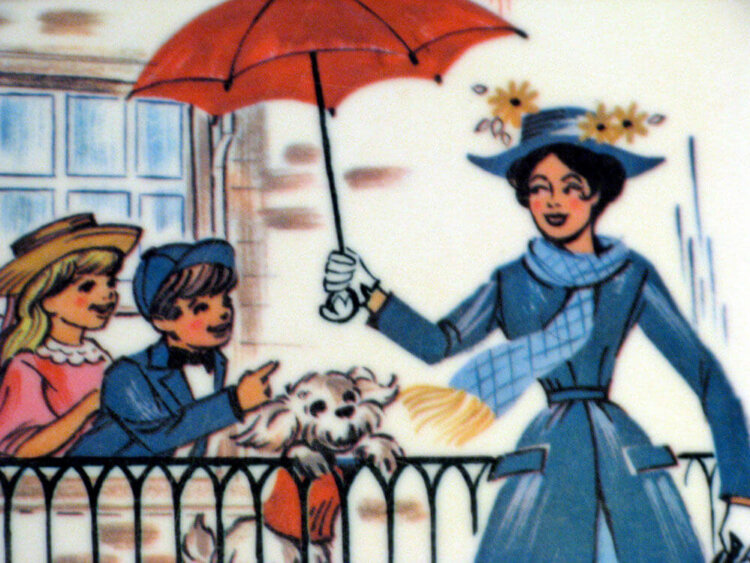
If you’re a human being, you’re probably breathing right now. In fact, you probably weren’t even thinking about it until I pointed it out. But I’m a clinical social worker who spends a lot of time talking to my clients about when, why, and how to breathe. They want to be more mindful, more intentional, and less reactive, but they struggle to understand why breathing is such an important part of the process. They’re looking for real suggestions and concrete tools, and breathing seems so… minor and obvious. How can something we all do every day without even thinking about it possibly help us break free of habitual behaviors and unhelpful reactions? And what does Mary Poppins, the fictional governess who is “practically perfect in every way,” have to do with any of this?
If you have hesitations about using breathwork to move forward in moments of challenge,I get it. I really do. I spent years rejecting suggestions to breathe; they felt dismissive and patronizing. If someone was telling me to breathe, it’s because I was anxious, stressed, or angry, and I needed a solution. I needed something more powerful than some silly breathing exercise.
What I didn’t understand then was that it’s not always easy to identify the best response to any given situation, and in our haste to just do something, we often end up doing the wrong, or less helpful, thing. We get flooded by strong emotions and overwhelming thoughts, which can make it nearly impossible to think clearly about what’s happening and what to do next.
Mindful breathing, or intentional breathing, not only calms our bodies and emotions, but also gives us a little headspace from the endless stream of thoughts that get in the way of our ability to see clearly. Each time we focus on our breathing, we’re stepping away from the worries about the future or the guilt about the past and coming back into the present moment. Once we get calm and grounded in the present, we’re giving ourselves the best possible chance at moving forward in the most effective, intentional way possible.
My clients understand all of this when I explain it to them in my office, but still struggle with it in the chaos of their daily lives. And that’s when we start talking about Mary Poppins.
Everyone’s heard of Mary Poppins, and they’re all familiar with her iconic word, “supercalifragilisticexpialidocious.” But most people don’t remember exactly what she says about the word: that it’s what she says when nothing else to say.
For Mary Poppins, it’s “supercalifragilisticexpialidocious.” But for us, it’s breathing. Breathing is what we do when we don’t know what else to do, when our children are driving us nuts or the national news is freaking us out or we’re overwhelmed by work or life or whatever and we don’t even know where to start. Breathing is our supercalifragilisticexpialidocious.
At any moment of the day, when we’re getting frustrated by the long line at the grocery store or about to hit “send” on an angry email to a colleague or on the verge of yelling at our kids and we’re not sure how to calm ourselves down or make a better choice, we can take a few deep breaths and give ourselves just enough time and space to get back on track.
Just as we stumble over the syllables of this ridiculous word the first few times we say it, mindful breathing can feel awkward and unfamiliar. The good news is that the more we practice noticing our breathing, the easier and more natural it will become.
How to practice:
Get your body into a comfortable position, one where you’re not likely to fall asleep but you’re not feeling super rigid or tense either. Take a couple of deep breaths, and then let your breathing settle into its natural rhythm. From there, notice where your breathing is most obvious: in your nose, chest, or belly. That’s all. Notice and breathe and keep paying attention.
You may feel bored and distracted within a second or two, and that’s ok. Everyone does. Just let go of whatever thoughts have caught your attention, and come back to your breathing.
You can do this for one minute, two minutes, or ten minutes. You can breathe in the shower, in the car before you walk into the house after a long day at work, or in between sips of coffee. The more often you do it, the better you’ll get at it. And the better you are at breathing, the more easily it will come to you when you really need it.
And remember, if you get confused in the heat of the moment or aren’t sure what to do, don’t stress or overthink it. Remember the wisdom of Mary Poppins: supercalifragilisticexpialidocious, and take a few deep breaths. From there, you’ll know what to do next.

Carla Naumburg, PhD, is a writer with a background in clinical social work and academia. She is the author of Ready, Set, Breathe: Practicing Mindfulness with Your Children for Fewer Meltdowns and a More Peaceful Family (New Harbinger, 2015) and Parenting in the Present Moment: How to Stay Focused on What Really Matters (Parallax, 2014). Her writing has appeared in The New York Times, The Washington Post, and The Huffington Post, among other places.Carla lives outside of Boston with her husband and two young daughters.


Grok Nation Comment Policy
We welcome thoughtful, grokky comments—keep your negativity and spam to yourself. Please read our Comment Policy before commenting.